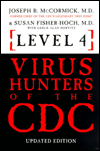Hey y'all
I had my first encounter with a Texan cowboy on campus today, he had the hat, the boots, and even said "howdy" to me. :)
Yesterday was the third part of the Monday Lecture Series.
Dr. Blanca Restrepo spoke on the correlation between Diabetes and Tuberculosis. Texas has 10/100,000 TB cases and the state of Tamaulipas in Mexico has 45/100,000 TB cases. TB is a disease without borders and needs to be controlled on both sides of the border. The Rio Grande River may provide a boundary between the US and Mexico, but it doesn't prevent the spread of disease.
A few TB stats:
-there are 8.8 million new TB cases a year;
-every 19 seconds someone dies from TB;
-1/3 of the world population is infected with TB.
Diabetes is the first non-contagious disease to be given a pandemic level title. Diabetes occurs across the world and has only hightened due to urbanization. Movement from rural to urban creates health altering lifestyle changes. Individuals who used to farm and live from the crops off their land are now purchasing food in grocery stores. Also individuals who used to depend on walking as their key mode of transporation now have urban transportation.
Dr. Blanca Restrepo's research shows that Diabetes is a contributing risk factor to TB. She is researching whether individuals with Diabetes are more infectious and also if individuals with Diabetes are more prone to TB. An interesting finding is that individuals with Diabetes and TB are more likely to have Multiple Drug Resistant TB, but not because they're not compliant with drug therapy, there's something unique to Diabetes.
I understood everything thus far, then Professor Restrepo started talking about flurochrome, primer, loop, stem, target, PCR, mutation, strains, isolates, beacons, CAC, TTT, GTC, and GAG... I got lost somewhere amongst all of the microbiology terms and figures.
By the end, all I got was "
those who are naive are more likely to be susceptible to TB." Hum, I think I missed something, there were some letters before "naive," but maybe this is why health education is so important. So there ya have it, the correlation between Diabetes and TB proves the importance of health education, ta-da!! :)
This lecture in combination with the diabetes class for patients that I've been attending on Tuesdays at the Health Center have made me realize the extreme importance of understanding, preventing, and maintaining diabetes!

























